An innovative simulation methodology for hybrid technology with nanocatalyst-enhanced solvent (HYB-SEN) as an alternative for improving environmental indicators in cyclic steam stimulation
Abstract
Pursuant to the goals of sustainable development, and in line with current energy needs, it is increasingly necessary to create more energy-efficient processes, and reduce their carbon footprint. New energy-efficient technologies for heavy oil recovery must be developed, such as hybrid technologies, where some additives are used for steam injection processes. One of the hybrid technologies with good potential for energy-efficient heavy oil recovery is cyclic steam injection with solvents enhanced with nanocatalysts (HYB-SEN), which could also generate oil upgrading by pseudo-aquathermolysis reactions. According to the above, this research focused on evaluating the impact on the reduction of greenhouse gases of the hybrid steam technology with naphtha-based nanofluids concerning the conventional cyclic steam injection (CSS).
For this purpose, a simulation model for conventional cyclic steam stimulation (CSS) called the CSS baseline was created, including the pseudo-aquathermolysis reaction and the reaction kinetics based on experimental tests such as thermogravimetric analysis (TGA), analysis of gases and fluids after coreflooding tests in the presence and absence of nanocatalysts, physicochemical characterization tests of crude oil, naphtha, among others, as well as fluid properties software. On the other hand, the reduction in the production of greenhouse gases by hybrid technology concerning the CSS baseline was calculated. The impact of the hybrid technology on the injection scenarios was determined through the proposed environmental indicators like energy efficiency, reduction of Basic Sediment and Water (BSW), and reduction of carbon footprint reflected in lower carbon -intensity, among others, by numerical simulation.
The results of the hybrid technology with nanocatalysts simulation showed an increase in oil recovery of an additional 3756.5 Bbl of crude oil compared to the conventional technique and a reduction greater than 18% for the CO2 production compared to conventional cyclical steam injection. Further, the environmental impact analysis of the scenario concerning the baseline was evaluated, finding a positive impact on energy efficiency improvement, reduction of BSW, and reduction of carbon footprint reflected in lower carbon-intensity, among others. Additionally, hybrid technology results in an additional benefit with the use of raw materials such as naphtha in crude oil transportation, used at the field, which implies a reduction in their subsequent use due to the improvement of crude oil properties.
The foregoing indicates that hybrid steam technology with naphtha-based nanomaterials not only generates positive impacts on oil recovery compared to the conventional technique, but also has a positive effect by enhancing energy efficiency and reducing carbon footprint.
References
Amrollahi Biyouki, A., Hosseinpour, N., & Nassar, N. N. (2018). Pyrolysis and oxidation of asphaltene-born coke-like residue formed onto in situ prepared NiO nanoparticles toward advanced in situ combustion enhanced oil recovery processes. Energy & fuels, 32(4), 5033-5044. https://doi.org/10.1021/acs.energyfuels.8b00638
Biyouki, A. A., Hosseinpour, N., Bahramian, A., & Vatani, A. (2017). In-situ upgrading of reservoir oils by in-situ preparation of NiO nanoparticles in thermal enhanced oil recovery processes. Colloids and Surfaces A: Physicochemical and Engineering Aspects, 520, 289-300. https://doi.org/10.1016/j.colsurfa.2017.01.089
Cárdenas, J. A. B. (2014). Modelo cinetico para determinar parametros cineticos de la pirolisis de la cascarilla de café (Doctoral dissertation, Uniandes). https://repositorio.uniandes.edu.co/bitstreams/97dbd428-b767-4d94-8ffd-81baa2d79108/download
Bera, A., & Babadagli, T. (2015). Status of electromagnetic heating for enhanced heavy oil/bitumen recovery and future prospects: a review. Applied Energy, 151, 206–226 https://doi.org/10.1016/j.apenergy.2015.04.031
Dziejarski, B., Krzyżyńska, R., & Andersson, K. (2023). Current status of carbon capture, utilization, and storage technologies in the global economy: A survey of technical assessment. Fuel, 342, 127776. https://doi.org/10.1016/j.fuel.2023.127776
Farajzadeh, R., Glasbergen, G., Karpan, V., Mjeni, R., Boersma, D., Eftekhari, A., . . . Bruining, J. (2022). Improved oil recovery techniques and their role in energy efficiency and reducing CO2 footprint of oil poduction. Journal of Cleaner Production, 369, 133308. https://doi.org/10.1016/j.jclepro.2022.133308
Franco, C. A., Nassar, N. N., Montoya, T., Ruíz, M. A., & Cortés, F. B. (2015). Influence of asphaltene aggregation on the adsorption and catalytic behavior of nanoparticles. Energy & Fuels, 29, 1610–1621. https://doi.org/10.1021/ef502786e
Franco, C., Flórez, A., & Ochoa, M. (2008). Análisis de la cadena de suministros de biocombustibles en Colombia. Revista de Dinámica de Sistemas, 4(2), 109-133. https://www.researchgate.net/profile/Camila-Ochoa/publication/263816420_Analisis_de_la_cadena_de_suministro_de_biocombustibles_en_Colombia/links/57d04b7108ae6399a389d710/Analisis-de-la-cadena-de-suministro-de-biocombustibles-en-Colombia.pdf
Friedman, H. L. (1964). Kinetics of thermal degradation of char-forming plastics from thermogravimetry. Application to a phenolic plastic. Journal of Polymer Science Part C: Polymer Symposia, 6(1), 183-195. https://doi.org/10.1002/polc.5070060121
García - Duarte, H. A., Ruiz - Cañas, M. C., Quintero, H., Medina, O. E., Lopera, S. H., Cortés, F. B., & Franco, C. A. (2024). Development of Nanofluid -Based Solvent as a Hybrid Technology for In-Situ Heavy Oil Upgrading During Cyclic Steam Stimulation Applications. ACS Omega, 9(39), 40511-40521. https://doi.org/10.1021/acsomega.4c03517
García-Duarte, H. A., Ruiz-Cañas, M. C., & Pérez-Romero, R. A. (2023). Innovative Experimental Design for the Evaluation of Nanofluid - Based Solvent as a Hybrid Technology for Optimizing Cyclic Steam Stimulation Applications. Energies, 16, 373. https://doi.org/10.3390/en16010373
Hamedi Shokrlu, Y., & Babadagli, T. (2013). In-Situ Upgrading of Heavy Oil/Bitumen During Steam Injection by Use of Metal Nanoparticles: A Study on In-Situ Catalysis and Catalyst Transportation. SPE Res Eval & Eng,, 16(3), 333–344. https://doi.org/10.2118/146661-PA
Hashemi, R., Nassar, N. N., & Pereira Almao, P. (2013). Enhanced heavy oil recovery by in situ prepared ultradispersed multimetallic nanoparticles: A study of hot fluid flooding for Athabasca bitumen recovery. Energy & Fuels, 27, 2194−2201. https://doi.org/10.1021/ef3020537
Hou, J., Li, C., Gao, H., Chen, M., Huang, W., Chen, Y., & Zhou, C. (2017). Recyclable oleic acid modified magnetic NiFe2O4 nanoparticles for catalytic aquathermolysis of Liaohe heavy oil. Fuel, 200, 193-198. https://doi.org/10.1016/j.fuel.2017.03.005
Husein, M. M., & Alkhaldi, S. J. (2014). In situ preparation of alumina nanoparticles in heavy oil and their thermal cracking performance. Energy and Fuels, 28, 6563–6569. https://doi.org/10.1021/ef5012963
Hyne, J. B. (1986). Aquathermolysis: a synopsis of work on the chemical reaction between water (steam) and heavy oil sands during simulated steam stimulation. https://openlibrary.org/books/OL19361916M/Aquathermolysis
Iskandar, F., Dwinanto, E., Abdullah, M., & Muraza, O. (2016). Viscosity reduction of heavy oil using nanocatalyst in aquathermolysis reaction. KONA Powder and Particle Journal, 33, 3-16. https://doi.org/10.14356/kona.2016005
Kaminski, T., Anis, S. F., Husein, M. M., & Hashaikeh, R. (2018). Hydrocracking of Athabasca VR Using NiO-WO3 Zeolite-Based Catalysts. Energy and Fuels, 32, 2224–2233. https://doi.org/10.1021/acs.energyfuels.7b03754
Montoya, T., Argel, B. L., Nassar, N. N., Franco, C. A., & Cortés, F. B. (2016). Kinetics and mechanisms of the catalytic thermal cracking of asphaltenes adsorbed on supported nanoparticles. Petroleum Science, 13, 561-571. https://doi.org/10.1007/s12182-016-0100-y
Nassar, N. N., Franco, C. A., Montoya, T., Cortés, F. B., & Hassan, A. (2015). Effect of oxide support on Ni–Pd bimetallic nanocatalysts for steam gasification of n-C7 asphaltenes. Fuel, 156, 110-120. https://doi.org/10.1016/j.fuel.2015.04.031
Nassar, N. N., Hassan, A., Luna, G., & Pereira-Almao, P. (2013). Kinetics of the catalytic thermo-oxidation of asphaltenes at isothermal conditions on different metal oxide nanoparticle surfaces. Catalysis today, 207, 127-132. https://doi.org/10.1016/j.cattod.2012.04.054
Osma, L., García, L., Pérez, R., Barbosa, C., Botett, J., Sandoval, J., & Manrique, E. (2019). Benefit–cost and energy efficiency index to support the screening of hybrid cyclic steam stimulation methods. Energies, 12(24), 4631. https://doi.org/10.3390/en12244631
Pretell, V., Ubillas, C., Ruiz, C., Rodriguez, J., & Ramos, W. (2020). Evaluación de los Parámetros Cinéticos por Análisis Termogravimétrico del Esquisto en la Formación Muerto, Talara-Perú. LACCEI Inc. https://www.academia.edu/92509830/Evaluaci%C3%B3n_de_los_Par%C3%A1metros_Cin%C3%A9ticos_por_An%C3%A1lisis_Termogravim%C3%A9trico_del_Esquisto_en_la_Formaci%C3%B3n_Muerto_Talara_Per%C3%BA
Ruiz-Cañas, M. C., Garcia-Duarte, H. A., Perez-Romero, R. A., & Manrique, E. (2023, June). Numerical Simulation of Cyclic Steam Stimulation and Solvents Enhanced With Nanocatalysts: A Methodologic Approach. In SPE Latin America and Caribbean Petroleum Engineering Conference (p. D011S006R003). SPE. https://doi.org/10.2118/213176-MS
Shah, A., Fishwick, R., Wood, J., Leeke, G., Rigby, S., & Greaves, M. (2010). A review of novel techniques for heavy oil and bitumen extraction and upgrading. Energy & Environmental Science, 3(6), 700-714. https://doi.org/10.1039/b918960b
Tang, X. D., Liang, G. J., Li, J. J., Wei, Y. T., & Dang, T. (2017). Catalytic effect of in-situ preparation of copper oxide nanoparticles on the heavy oil low-temperature oxidation process in air injection recovery. Petroleum Science and Technology, 35(13), 1321-1326. https://doi.org/10.1080/10916466.2017.1318145
Yi, S., Babadagli, T., & Andy Li, H. (2018). Use of nickel nanoparticles for promoting aquathermolysis reaction during cyclic steam stimulation. SPE Journal, 23(01), 145-156. https://doi.org/10.2118/186102-PA
Downloads
Copyright (c) 2024 CT&F - Ciencia, Tecnología y Futuro

This work is licensed under a Creative Commons Attribution-NonCommercial-ShareAlike 4.0 International License.

| Article metrics | |
|---|---|
| Abstract views | |
| Galley vies | |
| PDF Views | |
| HTML views | |
| Other views | |











